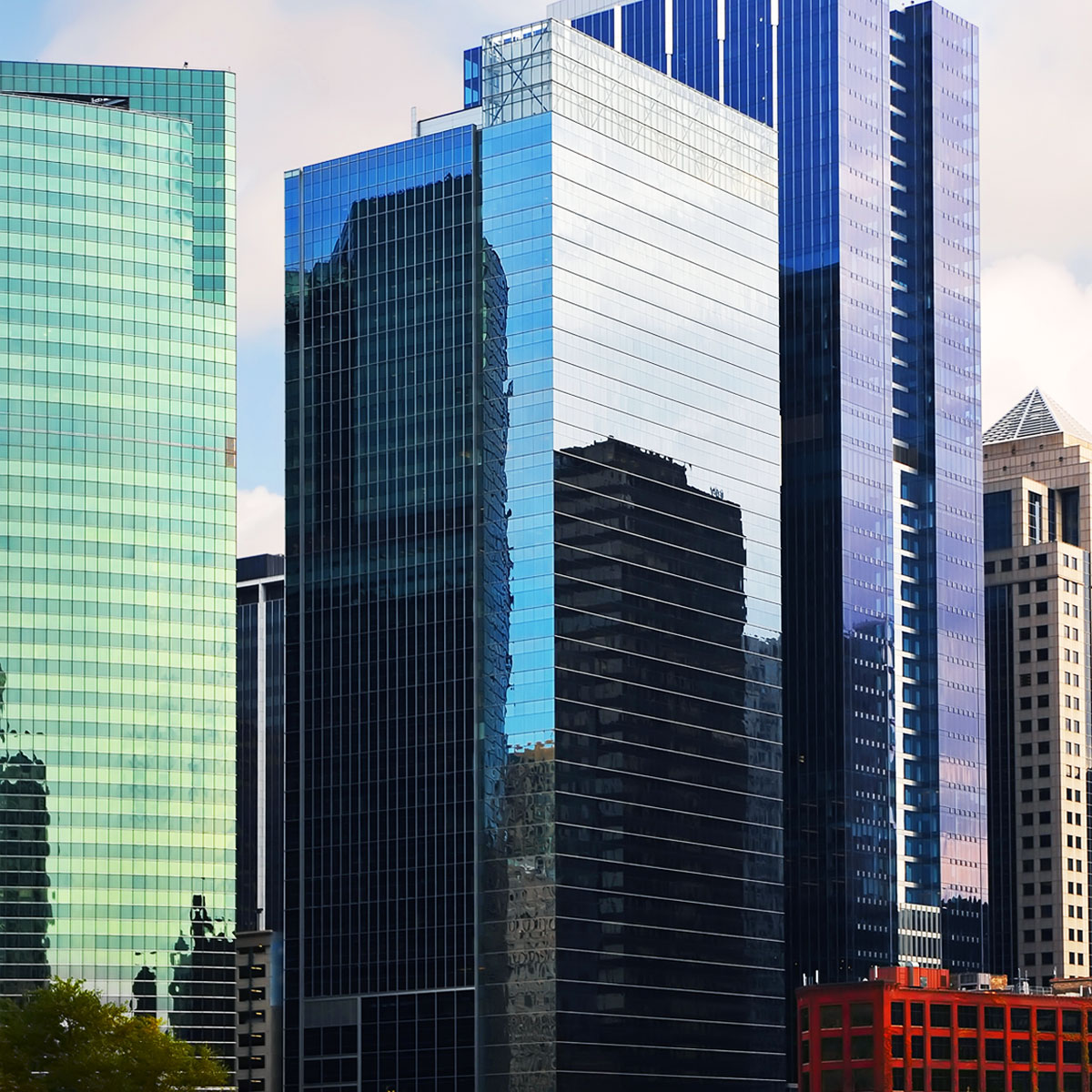IMPORTANT INFORMATION
This site is intended for use by institutional and professional investors only. Any person who is not an institutional investor should not access this website. Information on this site is not intended for institutional investors in any jurisdiction in which distribution or purchase of the investment referenced is not authorized.
This website, including the services we offer to you through this website and the Manulife Investment Management institutional website dashboard, is operated by the institutional global asset management arm of Manulife Investment Management (previously known as Manulife Asset Management), a segment of Manulife Financial Corporation (“Manulife”). Location-specific sections of this website are operated by the Manulife Investment Management entity identified in those sections. The distribution of information on the website may be restricted by local law or regulation in certain locations. This information is not intended for access or use by, any person or entity in any location other than the specific location chosen and persons accessing these pages should inform themselves about and observe any restrictions which apply in the location in which they are located.
If you wish to access and use this website, you must accept and agree to be bound by and comply with these global terms and conditions of use (the "Global Terms"), which apply to all parts of the Manulife Investment Management website, including the location-specific sections operated by a local Manulife Investment Management entity. If you do not agree to these Global Terms, then you must refrain from accessing or using the website. All Global Terms will apply irrespective of the specific use made by internet users of this website. Your use of this website constitutes your acceptance of these Global Terms.
This website is for information purposes only and does not constitute an offer to sell or a solicitation of an offer to buy any security or investment or advisory service, or a recommendation of any such security or service, that may be referenced on or through this website. No representation is given that the securities, products, or services discussed on, or accessible through, this website are suitable for any particular investor. You acknowledge that the provision of any information through this website shall not constitute or be considered investment advice. This website should not be considered as communicating any invitation or inducement to engage in investment activity in any jurisdiction.
The website is operated by Manulife Investment Management except to the extent local legal entity is specified elsewhere. Location-specific sections of this website are operated by the Manulife Investment Management legal entity identified in that section.
Canada: This website is operated by Manulife Investment Management Limited, Manulife Investment Management (North America) Limited, Manulife Investment Management Distributors Inc. and Manulife Investment Management Private Markets (Canada) Corp. The website is directed only to residents of Canada that are institutional investors resident in Canada and meet the definition of “accredited investor” as defined under National Instrument 45-106 Prospectus and Registration Exemptions ("NI 45-106") section 1.1 and that are resident in any of the provinces of Canada (hereinafter the "Offering Jurisdictions".). Therefore, only investors that satisfy these eligibility criteria should be accessing this website.
China: This website is directed only to residents of the People’s Republic of China (“China”) which are institutional investors. Therefore, only investors that satisfy these eligibility criteria should be accessing this website. Unless otherwise approved by the regulations on securities and funds of the People’s Republic of China, any funds and strategies mentioned in this website shall neither be directly and/or indirectly offered nor sold in the People’s Republic of China (not including Hong Kong SAR, Macau SAR or Taiwan in this regard).
The information displayed on this website may be incomplete or condensed or may be obtained from various sources and Manulife Investment Management does not make any warranty, expressed or implied, as to its accuracy or completeness and thus assumes no responsibility of it. Location-specific sections of this website does not mean that all the information displayed on this website is limited to the Manulife Investment Management entity identified in those sections. This website may include the information of the Manulife Investment Management entities across the regions. The experience, capabilities, viewpoints and any other information displayed shall not be regarded as the information of the Manulife Investment Management entity identified in those sections itself, nor shall it be relied upon as a guarantee of the experience, capabilities or performance of such entity.
European Economic Area: This portion of the website is operated by Manulife Investment Management (Ireland) Limited, which is authorised and regulated by the Central Bank of Ireland. This section of the website is only intended for the information of Professional Investors in accordance with the Markets in Financial Instruments Directive (2004/39/EC) as transposed into the relevant jurisdiction. resident in the European countries in which Manulife Investment Management products may be sold unless otherwise stated and is not suitable for individual investors. If you are an individual investor please leave this section of the website immediately. All of the information on this site is approved for publication by Manulife Investment Management (Ireland) Limited whose registered office is located at Second Floor, 5 Earlsfort Terrace, Dublin 2, Ireland, registration number 635225.
Hong Kong SAR: This website is only directed at Professional Investors, as defined in the Hong Kong Securities and Futures Ordinance and the Securities and Futures (Professional Investor) Rules, and institutional investors based in the Hong Kong Special Administrative Region (“Hong Kong”). Individual investors resident in Hong Kong and those resident or domiciled in territories other than Hong Kong should not access this website. The website is not directed to any person in any jurisdiction where the publication or availability of the website is prohibited, by reason of that person’s nationality, residence or otherwise. Persons under these restrictions must not access the website. This website has not been reviewed by the Hong Kong Securities and Futures Commission (“SFC”). This website is operated by Manulife Investment Management (Hong Kong) Limited, whose registered office is located at 10/F, Lee Garden One, 33 Hysan Avenue, Causeway Bay, Hong Kong. Manulife Investment Management (Hong Kong) Limited is licensed by the SFC to conduct various regulated activities in Hong Kong. Manulife Investment Management (Hong Kong) Limited reserves the right to grant or revoke the authority of any person to use this website at its absolute discretion. These Global Terms will be governed by and construed under the laws of Hong Kong. By accessing this website, you herebysubmit to the non-exclusive jurisdiction of the Hong Kong courts. If any part of these Global Terms is held invalid or unenforceable, that part will be deemed modified as necessary to make it effective, and the remaining provisions of these Global Terms will remain in full force and effect.
Indonesia: This website is operated by PT Manulife Aset Manajemen Indonesia, which is an investment management and investment advisor company licensed in Indonesia. All of the information on this site is approved for publication by PT Manulife Aset Manajemen Indonesia, whose registered office is located at Sampoerna Strategic Square, South Tower, 31st floor, Jl. Jenderal Sudirman Kav. 45-46, Jakarta, 12930, Indonesia. PT Manulife Aset Manajemen Indonesia is registered with and supervised by the Indonesian Financial Services Authority. This section of the website is only directed at institutional investors. Individual investors resident in Indonesia and those resident or domiciled in territories other than Indonesia is suggested not to access this website. Products and services offered by PT Manulife Aset Manajemen Indonesia are being set up under the laws of jurisdiction of Republic of Indonesia and are not meant to be offered to parties outside jurisdiction of the Republic of Indonesia where in such jurisdiction registration of the products and services offered by PT Manulife Aset Manajemen Indonesia is prerequisite.
日本:日本の機関投資家向けサイトはマニュライフ・インベストメント ・マネジメント株式会社が運営しています。日本向けセクションは、日本に拠点を有する機関投資家のみを対象としており、個人投資家向けの内容ではありません。日本在住の個人投資家及び日本国外に居住地又は本拠地を有する個人投資家はアクセスしないでください。
Malaysia: This website is operated by Manulife Investment Management (M) Berhad Registration No: 200801033087 (834424-U) (“Manulife IM (Malaysia)”), which is regulated by the Securities Commission Malaysia. This section of the website is only directed at Malaysian based institutional investors and is not intended for individual investors or institutional investors who domiciled in any jurisdiction/ country other than Malaysia. All of the information on this site is approved for publication by Manulife IM (Malaysia), whose registered office is located at 16th Floor Manara Manulife, No. 6 Jalan Gelenggang, Damansara Heights, 50490 Kuala Lumpur, Malaysia.
Philippines: This website, which is operated by Manulife Investment Management, contains materials pertaining to the Philippines and includes information and resources provided by Manulife Investment Management and Trust Corporation, a subsidiary of The Manufacturers Life Insurance Co. (Phils.), Inc., a trust corporation duly incorporated under the laws of the Philippines and regulated by the Bangko Sentral ng Pilipinas.
Singapore: This website is operated by Manulife Investment Management (Singapore) Pte. Ltd. (Company Registration No. 200709952G) ("Manulife IM (Singapore)"), which is an entity regulated by the Monetary Authority of Singapore. Manulife IM (Singapore) is a member of the Investment Management Association of Singapore (IMAS), and an approved fund management company under the Central Provident Fund Investment Scheme (CPFIS). This website is intended for accredited investors and institutional investors as defined in the Securities and Futures Act (Cap. 289) (“SFA”), and who are domiciled in Singapore with sufficient sophistication and investment experience to independently assess the merits of an investment in any product described herein and is not intended for distribution to, or use by, any person or entity in the United States, or any jurisdiction or country where such distribution or use would be contrary to law or regulation, or which would subject Manulife IM (Singapore) (including its affiliates) (collectively hereafter "Manulife") or any of Manulife's products or services to any registration requirement within such jurisdiction or country.
South Korea: This website is owned and provided by Manulife Investment Management (Hong Kong) Limited (“Manulife IM (Hong Kong)”) to Qualified Professional Investors in South Korea based on its registration with the Financial Service Commission as a cross-border discretionary investment management company. Manulife IM (Hong Kong) is licensed by the SFC to conduct various regulated activities in Hong Kong, whose registered office is located at 10/F, Lee Garden One, 33 Hysan Avenue, Causeway Bay, Hong Kong. The website is not directed to any person in any jurisdiction where the publication or availability of the website is prohibited, by reason of that person’s nationality, residence or otherwise. Persons under these restrictions must not access the website. Manulife IM (Hong Kong) reserves the right to grant or revoke the authority of any person to use this website at its absolute discretion. These Global Terms will be governed by and construed under the laws of Hong Kong. By accessing this website, you hereby submit to the non-exclusive jurisdiction of the Hong Kong courts. If any part of these Global Terms is held invalid or unenforceable, that part will be deemed modified as necessary to make it effective, and the remaining provisions of these Global Terms will remain in full force and effect. The information contained in this website is under no circumstances to be construed as solicitation for an investment in a Collective Investment Fund (CIT) or mutual fund (the “Funds”) or purchase of units or shares of the Funds. If Manulife Investment Management makes/ solicits investments in the Funds in the future from South Korean investors, the Funds will comply with the relevant requirements under the applicable laws and regulations of South Korea.
List of Qualified Professional Investors for Cross Border Discretionary Investment Business
1. Definition of “Qualified Professional Investor”
The term “Qualified Professional Investor” under the FSCMA consists of four categories in accordance with Article 301, Paragraph 2 of the Enforcement Decree of the FSCMA (the “Enforcement Decree”):
(1) Government;
(2) The Bank of Korea;
(3) Financial institutions designated by Article 10, Paragraph 2, Items 1 through 17 of the Enforcement Decree;
(4) Other entities prescribed by Article 10, Paragraph 3, Items 1 through 14 of the Enforcement Decree.
2. Detailed List of Professional Investor under the Enforcement Decree
The details of “financial institutions” designated by Article 10, Paragraph 2 of the Enforcement Decree and “other entities” prescribed by Article 10, Paragraph 3 of the Enforcement Decree are provided below.
(1) Financial institutions designated by Article 10, Para. 2 of the Enforcement Decree:
1. Banks under Article 2 of the Banking Act;
2. The Korea Development Bank under the Korea Development Bank Act;
3. The Industrial Bank of Korea under the Industrial Bank of Korea Act;
4. The Export-Import Bank of Korea under the Export-Import Bank of Korea Act;
5. The National Agricultural Cooperatives Federation under the Agricultural Cooperatives Act;
6. The National Fisheries Cooperatives Federation under the Fisheries Cooperatives Act;
7. Insurance companies under the Insurance Business Act (“insurance companies”);
8. Financial investment companies, excluding concurrent financial investment companies set forth in Article 8, Paragraph 9 of the FSCMA (“concurrent financial investment companies”);
9. Securities finance companies;
10. Merchant banks;
11. Fund brokerage companies authorized pursuant to Article 355, Paragraph 1 of the FSCMA (“fund brokerage companies”);
12. Financial holding companies under the Financial Holding Companies Act;
13. Specialized credit finance companies under the Specialized Credit Specialty Finance Business Act;
14. Korea Federation of Savings Banks and mutual savings banks under the Mutual Savings Bank Act;
15. The National Forestry Cooperatives Federation under the Forestry Cooperatives Act;
16. Korean Federation of Community Credit Cooperatives under the Community Credit Cooperatives Act;
17. The National Credit Union Federation of Korea under the Credit Cooperatives Act; or
(2) Other entities prescribed by Article 10, Para. 3 of the Enforcement Decree:
1. Korea Deposit Insurance Corporation and financial companies authorized to perform liquidation under the Depositor Protection Act;
2. Korea Asset Management Corporation under the Act on the Efficient Disposal of Non-Performing Assets, etc. of Financial Institutions and the Establishment of Korea Asset Management Corporation;
3. Korea Housing Finance Corporation under the Korea Housing Finance Corporation Act;
4. Korea Investment Corporation under the Korea Investment Corporation Act;
5. Korea Financial Investment Association;
6. The Korea Securities Depository established in accordance with Article 294 of the FSCMA (“KSD”);
6-2. An electronic registry defined in subparagraph 6 of Article 2 of the Act on Electronic Registration of Stocks, Bonds, Etc. (“Electronic Registry”);
7. The Korea Exchange;
8. The Financial Supervisory Service under the Act concerning Establishment, etc. of the Financial Services Commission (“FSS”);
9. Collective investment vehicles;
10. Credit guarantee fund under the Credit Guarantee Fund Act;
11. Korea Technology Finance Corporation under the Korea Technology Finance Corporation Act;
12. Fund established in accordance with laws (excluding Items 10 and 11) and corporations that manage and operate such fund;
13. Corporation that manage mutual-aid project in accordance with laws;
14. Local government agencies.
Switzerland: This portion of the website is operated by Manulife Investment Management (Europe) Limited, which is authorized and regulated by the Financial Conduct Authority (“FCA”). The following web pages contain information on the foreign collective investment schemes approved by the Swiss Financial Market Supervisory Authority (FINMA) and distributed by Manulife IM (Switzerland) LLC the representative office of Manulife Investment Management (Europe) Limited.
The information contained in the following pages is only directed to “qualified investors” as defined in Article 10(3) and (3ter) CISA and its implementing ordinance, at the exclusion of qualified investors with an opting-out pursuant to Art. 5(1) of the Swiss Federal Law on Financial Services ("FinSA") and without any portfolio management or advisory relationship with a financial intermediary pursuant to Article 10(3ter) CISA.
By clicking on the button “I accept” you certify that you are a qualified investor with domicile/registered seat in Switzerland and that you have read, understood and accepted the legal terms and conditions following below.
Qualified investors pursuant to Article 10 para 3 CISA are Institutional and Professional clients pursuant to FinSA, more specifically:
- Institutional Client (as defined under Art. 4 para. 3 and 4 FinSA), more specifically as:
- Financial intermediaries as defined in the Banking Act of 8 November 193411 (BankA), the Financial Institutions Act of 15 June 201812 (FinIA) and the CISA13;
- Supervised insurance institutions;
- Foreign clients subject to prudential supervision as the persons listed under a and b above;
- Central banks;
- National and Supranational public entities with professional treasury operations
- Professional Client (as defined under Art. 4 para. 3 FinSA), more specifically as:
- Public entities, institutions and foundations with professional treasury operations;
- Occupational pension schemes with professional treasury operations and other occupational pension institutions providing professional treasury operations;
- Companies with professional treasury operations;
- Large companies; is a company which exceeds two of the following parameters:
- Balance sheet total of CHF 20 million;
- Turnover of CHF 40 million;
- Equity of CHF 2 million.
- Private investment structures with professional treasury operations created for high-net-worth retail clients.
- High-net-worth retail clients and private investment structures created for them may declare that they wish to be treated as professional clients (opting out).
Taiwan: This portion of the website is for Taiwanese institutional investors only. Investors residing outside Taiwan are prohibited from using this portion of the website. Manulife Investment Management (Taiwan) Co., Ltd. was established in 1998 and became a member of Manulife Financial Corporation in October 2008. Manulife Investment Management (Taiwan) Co., Ltd. may at its sole discretion approve or revoke anyone’s right to use this website. The Terms are subject to and construed in accordance with the laws of the Republic of China (Taiwan); with respect to these Terms, the court of the Taiwan Taipei District Court has nonexclusive jurisdiction. If any part of these Terms is determined to be invalid or unenforceable, it will be regarded as revised as necessary so as to render it valid, and the rest of the Terms will remain valid. Please refer to “Country Schedule” for the “Notification Letter of Collection, Processing, Use and International Transmission of Personal Information by Manulife Investment Management (Taiwan) Co., Ltd. Manulife Investment Management (Taiwan) Co., Ltd. is part of the Manulife group of companies and certain content of this website may be provided by Manulife Group of companies and may refer to the services or capacity to be performed by other affiliates of Manulife Group of companies.
United Kingdom: This website is operated aby Manulife Investment Management (Europe) Limited. This section of the website is only intended for the information of Professional and institutional investors as defined in the FCA Conduct Business Rules (3.5 and 3.6) and resident in the United Kingdom. This is not suitable for individual investors. If you are an individual investor please leave this section of the website immediately. All of the information on this site is approved for publication by Manulife Investment Management (Europe) Limited. Registered in England (company no. 02831891). Registered Office: One London Wall, London EC2Y 5EA. Manulife Investment Management (Europe) Limited is authorised and regulated by the Financial Conduct Authority (firm reference no. 165328).
United States: This website is operated by Manulife Investment Management (US) LLC, Manulife Investment Management Private Markets (US) LLC, and Manulife Investment Management Timberland and Agriculture Inc. This section of the website is only intended for the information of intermediaries and institutional investors resident in the United States in which Manulife Investment Management products may be sold, unless otherwise stated, and is not suitable for individual investors. If you are an individual investor please leave this section of the website immediately.
Vietnam: This website is operated by Manulife Investment Fund Management (Vietnam) Company Ltd, which is regulated by the State Securities Commission. This section of the website is only directed at Vietnamese based institutional investors and is not suitable for individual investors. Individual investors resident in Vietnam and those resident or domiciled in territories other than Vietnam should not access this website.



















